“Fallen Angel” Christopher Daniels’ Top Ten Comics of All Time
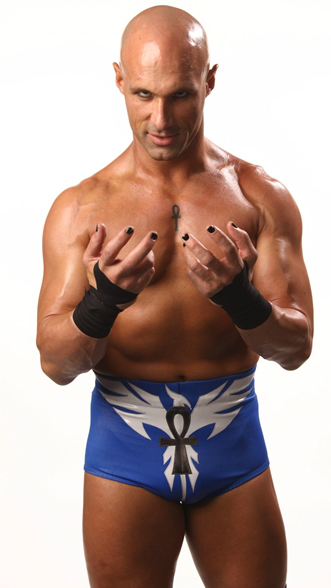 |
Among wrestling fans, TNA star Christopher Daniels is known as “The Fallen Angel,” a fearless athlete whose persona is inspired by “guys like David Koresh, and Kevin Spacey’s character in the movie Se7en – a guy with a God complex, a guy who thought he was God or thought he had a direct line to God.”
To those who know him, however, he is better recognized as a massive comic-book geek. So when it came time to plug his upcoming match for the TNA tag-team titles this weekend at the all-cage-match, pay-per-view event Lockdown, I had one condition: I would interview him as long as he kept the topic to comic books.
He was more than happy to agree. Here are his ten favorite comics of all time.
1. Chris Claremont & John Byrne’s X-Men (favorite issues: 130-138)
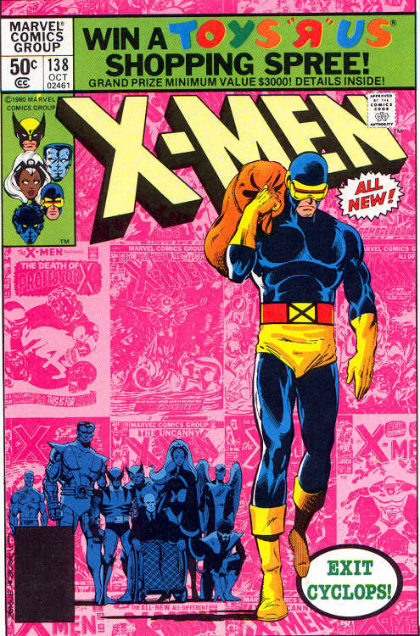 |
“I sort of broke the rules, I guess, because you asked for my Top 10 for comics, and I understood that to mean Top 10 single issues, but I cheated. It’s hard to quantify what you like the most. These things affected me for different reasons at different times, so I tried to put it in order like that, but at the same time it’s hard to go ‘Oh, this is my favorite comic book of all time!’ Having said that, some of these are single issues and some of them aren’t. If I had a run of comics that were my favorites, I mention which ones were my favorite issues, or a clean representation of why I like them so much.
So my first favorite Top 10 comic was Chris Claremont and John Byrne’s run on X-Men back in the early 80’s, and my favorite issues that I marked were 130 to 138 which is pretty much the beginning and the ending of the Dark Phoenix stuff. For me, that was what I remember as a kid, trying to collect, trying to get every issue of, and that’s what I point to when people go, ‘Oh, well how long have you been a fan?’ That’s the first thing I remember wanting and getting and being excited for each issue, and trying to see where it went. And when people want to know who my favorite character is, I point to Wolverine and I say ‘This is the first introduction that I had to Wolverine, where I remember him being Wolverine.’ This is the stuff where I went ‘This is a great character, I like this guy, I like this guy’s art, I like what’s happening here, I like the theme,’ and then the whole Dark Phoenix saga, obviously, is something that people still point to today as what got them interested.
It’s hard to look at the movies; for me it’s hard to find fault with them, because I know they’re being written for a different audience. But as a comic book fan, I look at it and go ‘OK, well that’s different, and it’s obviously not the way it was written by the various authors and artists that have covered the comics over the course of however many years.’ But at the same time, the screenwriters and the people that are making the movies, they sort of have to placate two masters, you have to get as many new fans (and I’m holding up air quotes as I say that), you have to get as many new fans as you can, while trying to make the hard core fans happy. And so I take it with a grain of salt.
First of all, I’m happy that the movies are being made, and when I see differences, unless it’s completely against the grain of the character – like stuff that you saw in the Daredevil movie, I thought sort of went against the grain of the character, that stuff bugs me or stands out – but when you change something to sort of compress 20 to 30 years of comic book history into a 2 hour movie, that’s something that doesn’t bother me too much. I mean, I could go and nitpick, and I know a lot of people do, but I’m happy that the movies are being made. I think that it’s great for the comic book writers and artists that have come before, that have made this character popular enough. If it gets more people involved, gets more people interested in the comic book title, then to me it’s awesome.”
2. Wolverine Miniseries (1982)
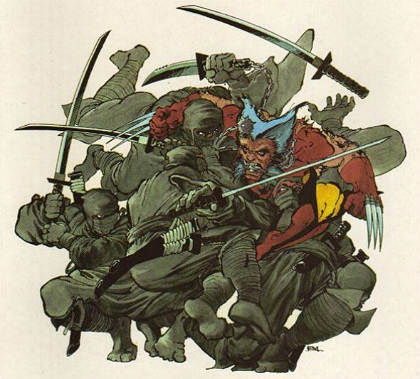 |
“Back then, there wasn’t a whole lot of mini-series stuff going on; this was one of the first Marvel mini-series, and these days, you could find a Wolverine story just about everywhere. Wolverine guest stars in every series; they’ll do a miniseries about him at the drop of a hat, because he’s popular, and that’s awesome. But in 1982, there wasn’t a whole lot of Wolverine going around, he was just in X-Men, he had guest starred in Marvel team-up, or some other thing, it was rare. For this to be the first big Marvel mini-series that I picked or that I enjoyed, and the fact that it was written by Chris Claremont, drawn by Frank Miller – I didn’t understand in 1982 the ramifications of all of that.
And now when I look back at it, I’m like ‘Wow! This was a milestone in comic books.”
3. X-Men: God Loves, Man Kills
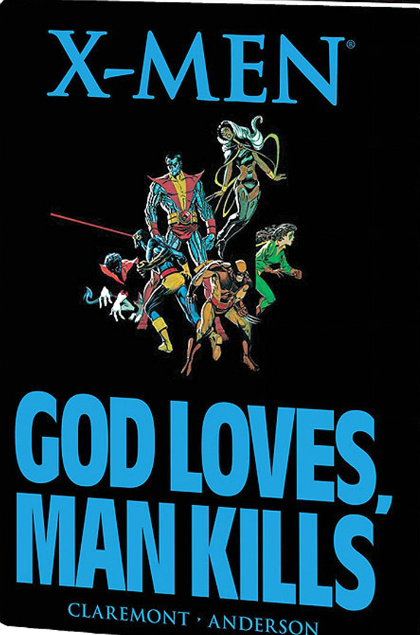 |
“I’m very straightforward with my X-Men love; I know, it’s sad. One of the reasons I really enjoyed that is I thought it encapsulated the whole point of the X-Men: the idea of the loners, the people that were ostracized for their abilities, that were ostracized for being different. For me it was sort of a standalone story that encapsulated what the X-Men were all about. I just recently went back and re-read it. The correlation between the mutant saga in Marvel Comics and race relations in the United States, and even today I guess you could look at how the issue of homosexuality is treated by the normal Mr. & Mrs. USA and how everybody has a different idea, how they treat it, how equality is treated – this story to me was something that was about how closed-minded some people can be, and even as close-minded as they are, they think that they have the right idea.”
4. Preacher
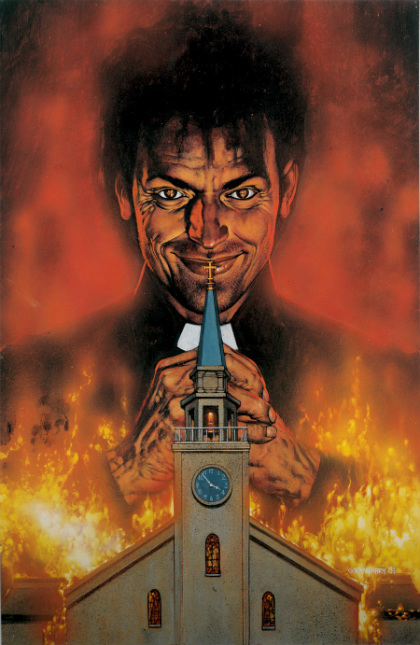 |
“One of the reasons that I dug that is the entire run was very well done, and it was one of the first series where it seemed like it had the beginning, the middle and the end plotted out from the first page. It didn’t occur to me that this was going to end in 60, 65 issues, but when you go back and reread the entire series at a stretch, you can see that Garth Ennis had this idea of where these characters were going to go from the beginning. And these little episodes in the middle, dealing with the Allfather and the Grail and all these things, when you step back and see the grand scheme of it all, some really great, great stories being told, and some great cliffhangers in the actual series itself.
One of my favorite issues of that series, I want to say it’s issue 8, where Tulip gets shot, and you’re thinking at this point you’ve just been introduced to these characters, like within the space of eight months, and you’ve gotten personally invested in them, and at the end of one of these issues, Ennis shoots one of them in the face. Holy crap! Everything just changed! A couple of issues later, you realize not-so-much, but you didn’t know that at that point, and that was one of the great cliffhangers that I really dug about that. And it’s got such a specific mentality towards religion, and God, and how people see God, and how God is interpreted by the human race, and I guess Garth Ennis’ take on God and his place in the world is so specific and so direct, and as you read it, it makes you sit back and go ‘Oh, yeah, I can see that!’ It’s sort of a downer, but it gets you thinking.”
5. John Byrne’s Fantastic Four
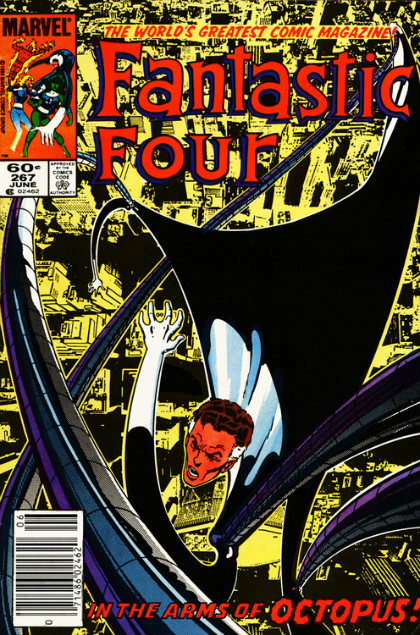 |
“It’s so much fun, this family setting that he wrote about, and the relationships between all four characters and their extended family. People like Alicia Masters and She-Hulk and the people that he dealt with; they were some of the most fun stories that I read.
The anniversary issue that he did, where the Puppet Master kidnapped them all and put them on the game table; issue 250, where they dealt with the gladiator from the imperial guard; issue 267 was the issue where you had the miscarriage, it was a standalone issue where Reed Richards was fighting Doctor Octopus, and it’s one of the best endings of any comic book of all time, I think; and then 285 with a great story that Byrne wrote where it was a single story with the Human Torch where a kid wants to be so much like the Human Torch that he sets himself on fire – it was a story about how stars have a sort of responsibility to their fan base, how they affect that.
It was just well written, and it was one of those things that after I put this list together I went back to reread it and I was like ‘Man, this is ahead of its time!’ This was back in the late 80’s, and to talk about how these people that we put on pedestals, how fans can be affected by them, and how you have to be careful about the things that you do as a person in the public eye.”
6. Midnight Nation
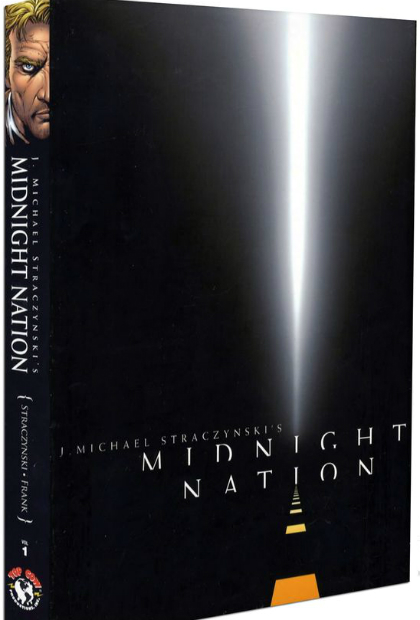 |
“When this first came out, I picked it up because I had heard of J. Michael Straczynski, and I found out this guy that writes Babylon 5 is writing a comic book, so I’ll give it a shot. To me it’s one of the best standalone stories, non-superhero, non-super-heroic, in comic books, and when I tell people, when I talk to my friends, and they’re like ‘You’re a comic book guy, aren’t comic books for kids?’, that sort of thing, I’ve picked this up, I’ve given this to a couple of different people, and I’ve said “Give this a shot!” This, to me, was adult graphic novel fiction at its finest. It’s one of the reasons why if he’s writing something, I’ll pick it up and give it a shot. And Gary Frank is one of my favorite artists, and whenever he’s drawing something, I’ll usually pick that up and it’s something that’s worked for me.”
7. New Teen Titans
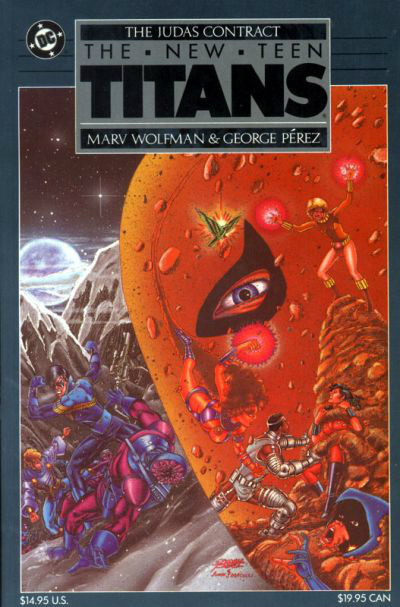 |
“Most of the series – and this is coming out at the same time as the X-Men, the Claremont and Byrne stuff – to me it sort of has that same feel, of these young super heroes dealing with their powers, dealing with becoming a team and having these interpersonal relationships. Deathstroke was one of my favorite DC characters at the time – I liked how this guy was such a planner, and the fact that he would get this girl to infiltrate the Teen Titans – that whole storyline for me was great, and how it affected Beast Boy and the ramifications of that, and then having the character die at the end – it just adds a lot of gravity to the characters of the Teens.”
8. Camelot 3000
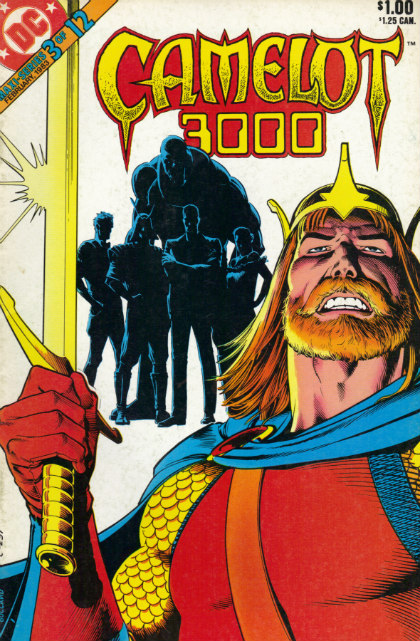 |
“It was one of the first miniseries that wasn’t straight-up super heroes. I picked it up in the middle of its run, and I was lucky enough to go back to the comic shop and find issues and read it from the beginning, and it was one of those standalone stories that stood out for me, where I could see what comics could be. I wasn’t even grown up at the time, I was still a teenager, but reading this story, I thought this was a higher art. It wasn’t just cartoony, bang-pow stuff. It played off of history, and had all these genre crossing things, like sword and sorcery, and aliens, and that sort of thing, and it was the first time that I’d ever seen Brian Bolland’s work, who’s an outstanding artist, and doesn’t do enough stuff. I get a chance to reread it every once in a while, and I still enjoy it – it stands up.”
9. Penance Relentless
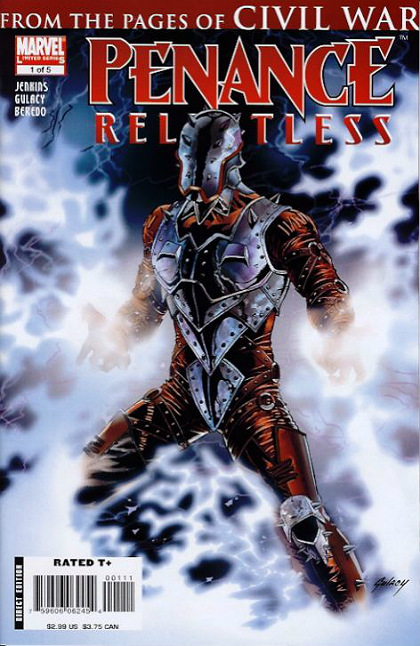 |
“I sort of correlate the Civil War and how it started with 9/11, and basically what happened was, Speedball and the New Warriors were trying to capture these Civil War villains, and they were doing it while they were filming a reality TV show, and because they went in unprepared, Nitro, the main villain, blew up and killed a grade school, and killed 600 grade-school kids, and so that’s how the whole Civil War story line started.
Speedball was the character that was blamed for the entire thing, and Penance was the character that he became, because of all this and because of all the guilt that he felt from all these kids dying, because of his irresponsibility and actions, he became this kind of self-loathing character. The mini-series is sort of how he went from sort of blaming himself and how he got through that dark period and went back to his old ways. It was written by Paul Jenkins and drawn by Paul Gulacy.
What I thought was really cool was that this character was not a Spider-Man wannabe, but sort of that happy-go-lucky, the guy that would quip as he was fighting, and you take this instance in his life where he has to grow up, because it’s not games anymore, it’s not fun and games. There’s actual consequences and repercussions to the mistakes that you’ve made, and that to me was one of the best things out of the Civil War, was taking this character that was fun and games, and making him realize that this could be life or death, and this particular mini-series that they did, it talked about how went through a period of time where he was hating himself and blaming himself, and then how he went and found Nitro and made him pay for his part in this whole thing, and at the end of it he sort of comes out of it, and after this mini-series happened, went back to the Speedball persona, and went into more of a team situation at the academy.
I didn’t pick it up as the issues were put out; I picked it up as a trade paperback. It was one of those things where I wasn’t expecting anything from it, I just happened to pick it up at a sale, I got it cheaper than cover price, and I thought ‘This will be good to read.’ I was lucky that it was one of the things that I enjoyed so much that I picked it as one of my favorites. I thought it was great. This guy, Paul Gulacy, has been drawing since I was a teenager, and now this was maybe 3 or 4 years ago – still great art, iconic art, and it was a great character.”
10. Irredeemable
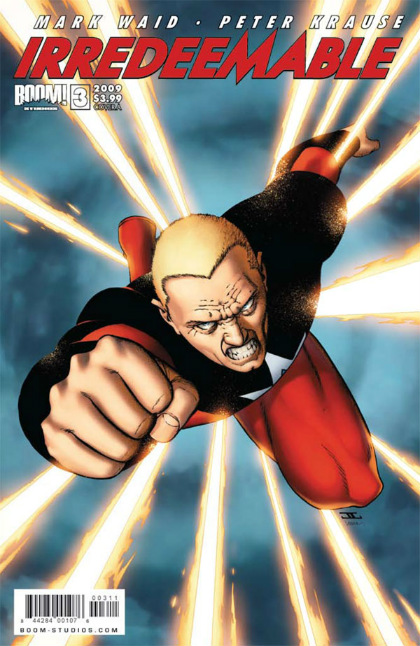 |
“When I heard the concept of this, I had to give it a shot. Someone had told me about it; what happens is that if Superman sort of went crazy, that’s the concept. It was one of those where I picked up the trade paperback, and was astounded. In this day and age, fans want to see a much more realistic take on their comic books, and their comic book characters, and this to me was a very realistic take. Sort of like a crazy ‘What If/Elseworlds’ style, and what would happen if someone with all that power went nuts and off the rails. It was a great evolution from the beginning, where he’s already gone crazy, and the story is telling it in flashbacks of what happened, why it happened, the ramifications with these supporting characters, and these villains that were villains until he went crazy are the heroes that end up having to save the day, or to save the world from this Superman-style hero’s chaos. That was a great concept and it kept me engaged from the beginning until the end.”
Christopher Daniels has an official website and can be followed on Twitter and seen on Impact Wrestling every Thursday night on Spike TV.
